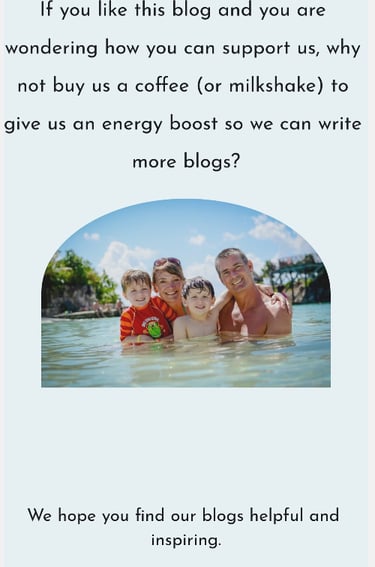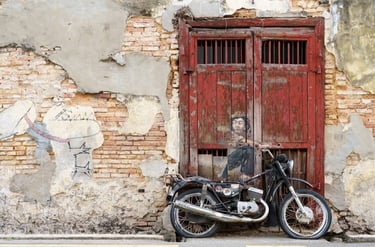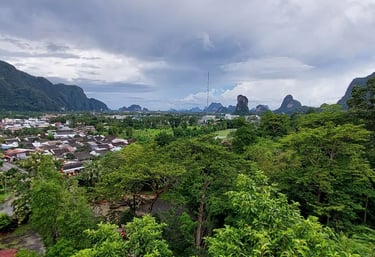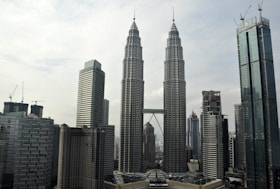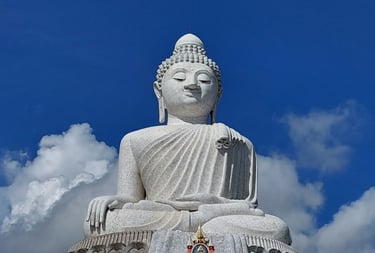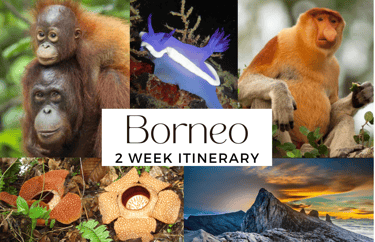
Complete Guide To Climbing Mount Kinabalu Borneo
Your complete guide to climbing Mount Kinabalu. Scaling Mount Kinabalu is a breath-taking ascent where climbers will conquer lush rainforests, challenging trails and reach the summit for an unforgettable sunrise.
MALAYSIA
Mount Kinabalu is the highest mountain in Malaysia. It is a craggy, tectonic plateau, technically part of the Bornean Crocker Range and looms over the surrounding Sabah jungle.
For most climbers, the whole reason they visit is to get up at 02.00 and watch the sun rise over Low’s Peak.
When considering whether to climb Mount Kinabalu, it pays to do your research beforehand. What gear should you bring? What’s the accommodation like on the mountain? If Kinabalu is on your itinerary, do you even have to climb? And what about altitude sickness?.
Mount Kinabalu is a World Heritage Site, and you’ll pass through several habitats and ecosystems on the way up: steamy Sabah rainforest, Montane grasslands, desolate rock-scapes and the famous alpine meadows. Keep your eyes peeled too – there are 5,000 types of plants, 326 different birds and over 100 mammal species on the mountain.
You cannot climb Mount Kinabalu independently, most tour companies run 2D1N climbs, with the one night spent in dorm accommodation on the mountain. You are no longer permitted to make the climb in one day.
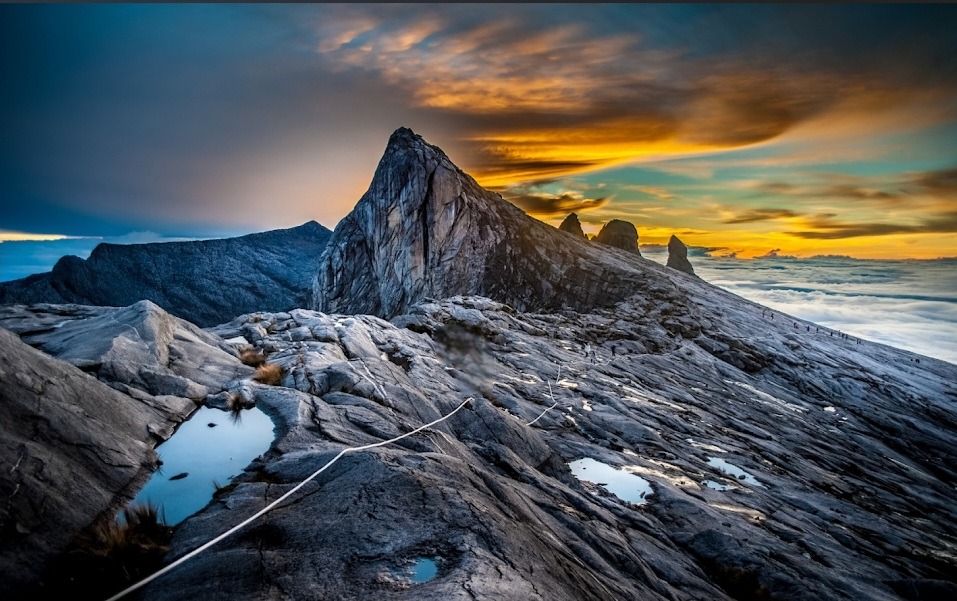

To climb Mount Kinabalu, you must obtain a permit and as only 163 permits are issued daily, we recommended booking your slot at least six months in advance especially during peak season.
A climb slot is essentially a bed in the Panalaban Base Camp that comes with a climbing permit. The number of beds available corresponds to the number of climb permits issued.
1. When is the best time to climb Mount Kinabalu?
Borneo sits in the middle of a swirling tropical vortex, so it’s always raining somewhere!
As a general rule, the dry season from March to August is usually the best time to climb. The temperatures are mild, the skies are (mostly) clear and you’ve got a better chance of seeing the best sunrise. The best months are March and April, although June to September can be fine too (it just gets very hot).
It is advisable to avoid the monsoon season, which typically occurs from December to January. Despite the weather being unpredictable, it's still possible to plan a successful climb. It's best to come prepared for any weather conditions, rain or shine.

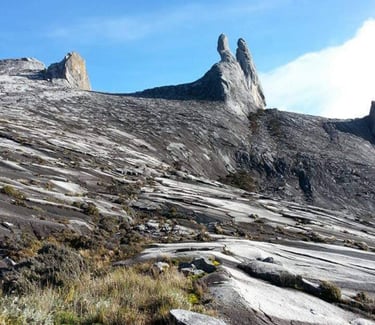
2. How far in advance should I book my Mount Kinabalu Climb?
Once you have made the decision to climb, it is advisable to book as soon as possible. During peak season (May to August), it is recommended to book 4-6 months in advance for the Regular Descent and 2-3 months for the Via Ferrata. In the off-peak season, 1-2 months’ notice should be sufficient.
3. Should I book my mountain climb slot or flight ticket first?
Before booking your flight tickets, it is recommended that you verify the availability of Mount Kinabalu climb slots and obtain confirmation of your booking first.
4. What should I do if my preferred climb package is fully booked on my preferred date?
If your preferred date for the desired climb package (either Via Ferrata or Regular Descent) is fully booked, you have two options:
• Try alternative dates.
• If you must climb on your preferred date only, try switching to the other type of climb package (Regular Descent to Via Ferrata or vice versa).
• If Regular Descent is booked out on your date, you may still be able to get a permit if you book a Via Ferrata climb. The chances of getting a permit for the Via Ferrata route is higher. The reason for this is because the hostel you stay at will depend on the route you book. Regular Descent climbers stay at Laban Rata Resthouse & Via Ferrata climbers stay at Pendant Hut. As the Via Ferrata climb is more expensive, fewer people do it. This means there is more availability in the Via Ferrata hostel, and more permits available.
5. Can beginners climb Mount Kinabalu? Do I need training to climb Mount Kinabalu?
You will need a certain base level of fitness: there are many steps on Mount Kinabalu, not to mention slippery, rain-soaked rocks, uneven terrain and high altitudes (which make breathing tricky). The mountain climb takes two days. On the first day you’ll climb about 6km worth of steps, up through the lowland jungle, to around 3,200m above sea level. The second day is more technical: you’ll get up early and climb to the summit. This stretch is rocky and steep, about 15-20 degrees incline.
Although not mandatory, it is advisable to engage in some regular exercise or training, particularly if you are a beginner or a novice hiker, as this can provide an extra advantage in achieving a successful ascent.
However, opting for the Via Ferrata routes requires a certain level of fitness. Although the Via Ferrata activities do not involve much distance, they are time-consuming and may leave you feeling more fatigued during the descent.
6. Is it safe to climb Mount Kinabalu?
Unless there are unforeseeable natural occurrences, it is a safe climb. Following your Mountain Guide’s instructions and staying on the designated path decreases the likelihood of suffering any injuries or accidents. There are reported incidents where climbers lost their way, injured themselves or lost their lives on the mountain, but it's worth noting that such accidents typically happen when they venture off the marked trail alone or stray from their climbing group.
7. What are the different routes of reaching the summit of Mount Kinabalu?
All three routes follow the same path to reach the Low’s Peak summit and require a 2D1N trek. There are three routes available to descend Mount Kinabalu: Regular Descent, Via Ferrata (Walk the Torq), and Via Ferrata (Low's Peak).
The only distinguishing feature between the Regular Descent and the Via Ferrata routes is that after completing the sunrise summit, the Via Ferrata routes offer an extra activity that involves scaling the side of the mountain. If your primary objective is to summit the mountain, then the Regular Descent route is recommended.
8. How long does it take to climb Mount Kinabalu?
The ascent to the summit of Mount Kinabalu requires a minimum of two days and one night. Typically, hikers begin the first day's trek in the morning via the Timpohon Gate, then it takes approximately 5-7 hours to reach Panalaban Base Camp for an overnight stay. On the second day, climbers commence their ascent to the summit at 02.00, arriving at Low's Peak summit at approximately 05.30am to catch the sunrise. Afterwards, hikers can return directly to Panalaban (if they are not participating in any Via Ferrata activity), check out, and descend straight to Timpohon Gate. Finally, they can collect their climb certificate at Kinabalu Park HQ before departing for Kota Kinabalu City or other desired destinations.
9. How many days should I spend on my Mount Kinabalu trip?
Whilst you can arrive and climb the next day, it is advisable to consider spending a night in highland areas such as Kinabalu Park, Kundasang Highland or Poring Hot Springs in Ranau before beginning your ascent. This is highly recommended as it allows for acclimatization to high altitude and minimizes the likelihood of developing Acute Mountain Sickness (AMS).
Click here for a range of hostels, lodges and resorts in the Kinabalu Park - Kundasang area.
10. What time will I be back in Kota Kinabalu following descent from Mount Kinabalu?
The time of arrival at Timpohon Gate is highly variable and dependent on the physical fitness of the climber and their group. Typically, a reasonably fit climber can reach Timpohon Gate from Panalaban Base Camp between 11.00 – 14.00, while most climbers arrive between 13.00-15.00.
It is advisable not to rush off to the airport on the same day of your descent from Mount Kinabalu, as there are several unforeseeable circumstances such as a slow descent, injury, landslides, traffic congestion, vehicle breakdown and others that could cause delays. The total time required for certificate collection and transportation from Kinabalu Park HQ to Kota Kinabalu city is approximately 3 hours - see below for accommodation recommendations for Kota Kinabalu.
11. What do I need to pack and prepare for Mount Kinabalu Climb?
For a comprehensive list of items to bring when climbing Mount Kinabalu hiking, please check out the "Things to Bring" checklist, which can be customized based on your individual preferences and requirements. To ensure a comfortable hiking experience, we suggest keeping your backpack weight to a maximum of 6 to 8kg.
12. Where can I store my excess luggage not needed for the climb?
If you are returning to a hotel in Kota Kinabalu after your climb you may be able to store your baggage there. Alternatively, the Kinabalu Park Headquarters provides a luggage storage service for a small fee.
13. Can I hire a porter for the climb?
You can book a porter on arrival for your climb. Porters can carry up to 10kg of weight. Rates vary depending how much gear you’ve got, and the particular climb route you take. Payment in cash is accepted by the porters directly.
14. Are there toilets on the mountain?
On the summit trail up to the Panalaban Base Camp there are water stops and fairly clean toilet facilities. Untreated fresh mountain water is available at every shelter; you may refill at these stops (Bring some water purification tablets) but it’s not recommended for anyone who have sensitive stomach.
It is recommend to bring enough water to get you to 6km – approx. 1.5l – 2l.
15. What is Panalaban Base Camp?
Situated between 3,230 to 3,323m above sea level, Panalaban Base Camp has a group of huts including Laban Rata Resthouse & Pendant Hut. These huts offer overnight accommodation for climbers, with shower facilities and meals.
It’s not camping but don’t expect 5-star accommodation either.
The dorms have bunk beds, and all your sleeping bags, pillows and sheets are provided; it’s clean, cosy and comfortable. The dorms are solar-powered - which means hot showers on a sunny day and cold showers on a rainy day. There are plugs in the dorms so there's no need to bring a battery pack.
If you struggle sleeping in dorm rooms, we recommend packing a sleep mask and a couple of stout earplugs.
If you have any special dietary requirements let your tour operator know in advance.
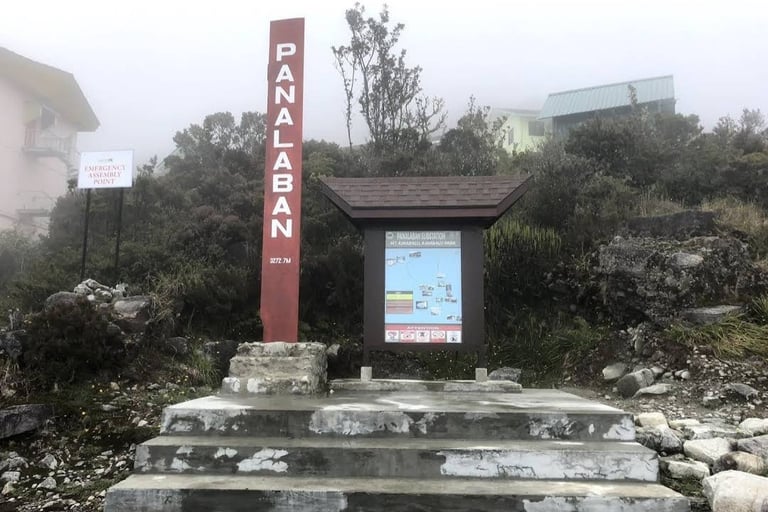

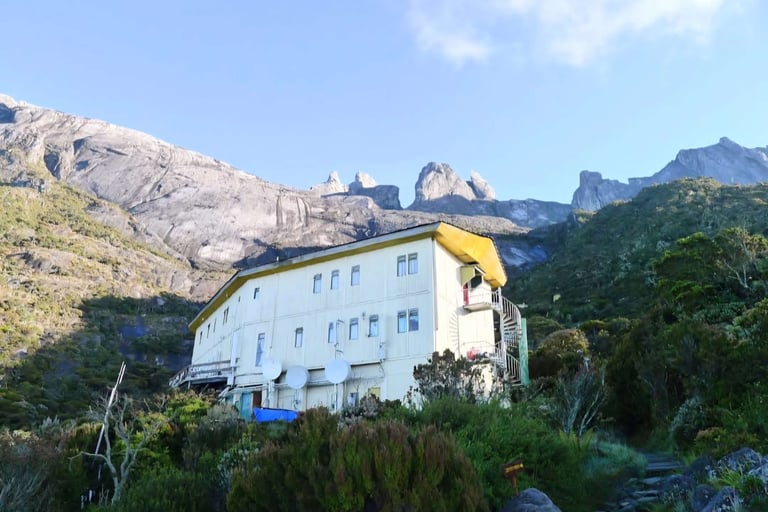

16. What is the food like?
Regardless of which tour package or tour operator you choose, your food will be provided by Mount Kinabalu Park HQ. You'll get a packed lunch on the way up, a buffet dinner and a light breakfast before (and after!) your summit the next morning.
The packed lunch is very basic (usually a drink, a sandwich and a fruit), so if you need more energy, you should bring some snacks. Dinner at the top is pretty tasty and is an extensive buffet with Western and Asian choices, so you will definitely not go hungry.
If you have any dietary requirements, please do let your tour operator know in advance.
17. What happens on Day 2 – The summit climb?
After a quick breakfast, the summit climb begins at 02.00. There are three essential aspects to keep in mind about the climb to the summit: a headtorch is mandatory, reaching the summit checkpoint by 05.00 is required to be eligible for the summit (otherwise you won’t be allowed to summit) and in the event of heavy rain, the summit climb may be cancelled.

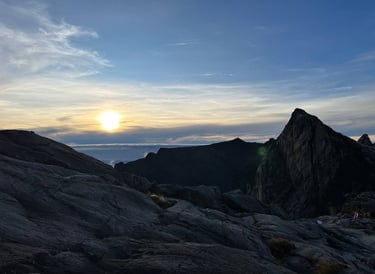
18. What’s the difference in pricing?
When you start researching climb packages, you might notice that prices vary hugely and wonder if there's a reason for the difference. The short answer is: not as much as you'd think.
Mount Kinabalu is so tightly controlled that everything from the accommodation and food to the state-appointed Mountain Guide is the same for all climbers. A better tour operator will be more responsive and more professional in organising the logistics of your climb. But paying more does not get you a better mountain guide, or accommodation, or food.
We booked our experience with Borneo Calling and we cannot recommend them highly enough. Our guide was completely dedicated to making sure we had a great experience and the summit views at sunrise were simply amazing. The whole experience from booking to climbing back down was extremely professional. For more information click here.
19. What should I wear?
What to wear on Mount Kinabalu can change from hour to hour, never mind day to day. The mountain’s climate is known to be pretty temperamental. Nights get icy, afternoons are muggy, and rain storms can sweep in without notice. Generally, you want to wear multiple light layers, so you can adjust on the fly. On the first morning, wear shorts. It’s very steamy down in the Sabah jungle, and everyone else will be sweating into their hiking pants.
Once you’re up on the mountain proper, it can get cold, especially at night: switch to trousers, thick socks and a polar fleece jumper. Don’t forget the waterproof jacket either. For the dawn summit, you need a head torch, a beanie and warm gloves. Here’s a good packing guide to get you started.
20. What if I don’t want to climb?
There alternative activities and are several hikes around the base of Mount Kinabalu Park Headquarters, many of which can be combined to create day-long walks. The trails offer good chance to see birds and other small wildlife, compared to the busy summit trails. You will be walking alone and only spot a handful of hikers throughout the day. Even though the level of difficulty varies from one to another, generally speaking all trails are easy and well-marked enough to be walked without a guide.
Things To Bring - Packing List
Do not bring valuable items.
Mount Kinabalu will require some specialist trekking gear, along with all the common sense stuff (sunscreen, sunglasses, cap etc). Here’s a few other things you might need.
A small backpack for your jacket, drink bottle, snacks etc.
A waterproof jacket. It rains a lot on Mount Kinabalu. Pack a light-weight rain jacket and some waterproof bags for your gear.
A head torch. For the morning summit hike (which starts in pitch darkness). You can pick these up easily in Kota Kinabalu.
Water bottles. For obvious reasons, pick a sustainable, re-useable drink bottle.
Snacks. Any good trail mix, chocolate or sugary treat.
Good hiking boots. Make sure you get a pair that support your ankles, and wear them in at least two months before the trip.
Thick hiking socks. Pack 3-4 pairs so you always have a dry pair.
Earplugs. Accommodation on the mountain is dorm-style. That means snoring.
Shorts. At least for the first day, when you’re trekking through muggy rainforests. Bring long pants for the summit climb.
Money. You won’t need much, but it’s good for tipping porters and buying food.
Waterproof gloves. These will keep your digits warm, but they’re also handy for the Via Ferrata.
Layers. The big one. Pack some thermal underwear, light jumpers and a jacket. Layer up or down, depending on temperature.


Where to Stay in Kota Kinabalu
For a ‘splash the cash’ option stay at the 5* highly rated Shangri-La Tanjung Aru Resort & Spa, or for a comfy low-key stay with all you need, choose Homy Seafront Hostel.
If you are climbing Mount Kinabalu you will need to stay over at least 1-2 nights in Kota Kinabalu before or after your climb.
We stayed at the Kinabalu Daya Hotel for its convenient location close to the Saturday Night Market and Sunday Gaya Street Market. The Suria shopping Mall was only a 3 minute walk away which was convenient for stocking up on snacks and we bought our head torches and extra hiking socks here for climbing Mount Kinablau. The rooms and are clean and comfortable and they happily stored our extra luggage while we were away for 1 night on Mount Kinabalu.
Discover Our Other Guides
Phang Nga On A Backpacker Budget
Note: This post contains affiliate links. When you make a purchase using one of these affiliate links, we get paid a small commission at no extra cost to you.
SUBSCRIBE
Subscribe to our newsletter to always be the first to hear about recent Blogs and adventures.

